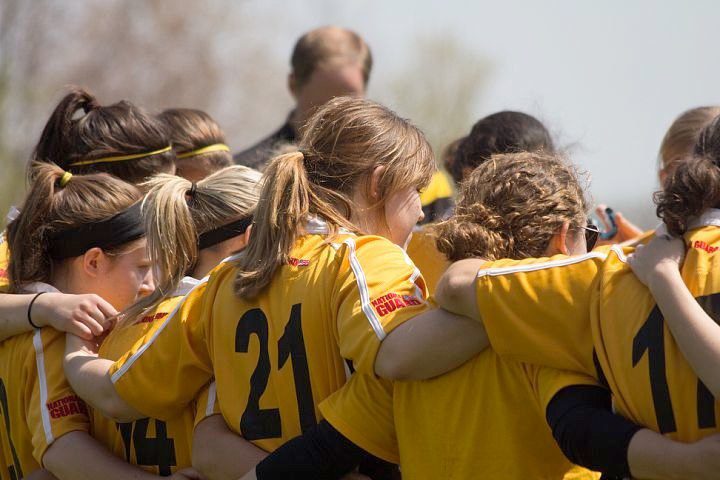There are two sides to the club sports coin. The positive aspects are the independence and flexibility that a non-varsity sport provides. The more challenging part is the responsibility that the captains and team leaders are faced with.
One of the biggest challenges is that the teams must figure out their budgets on their own, because club sports are student-led and are not funded by the school.
Instead the teams receive funding from Student Senate. Club sports are allotted between 3,000 and 3,500 dollars annually. Often this isn’t enough to cover all of a team’s expenses for the season.
“Senate gives us what they can—generally the maximum allotted to club teams—and we always burn through it by the spring semester. Because of this we collect dues every semester and we fundraise. Part of budgeting for our team is knowing how much to collect in dues so that we can pay for the rest of our season ourselves once the Senate money runs out,” Alyssa Florey, women’s rugby treasurer, said.
Teams are hesitant to ask Senate for more money if they run out because money is tight for all student groups. Senate also has the ability to revoke the team’s funding if they don’t use all of it, if they misuse it on expenses they didn’t budget for or if the team is no longer considered a club.
“We pretty much know that there is a certain amount of money that they will give to club sports, and all club sports get somewhere in that range. So we don’t ask for more, because we know that it’s not in their budget to give it to us,” Senior Women’s Ultimate Frisbee Captain Amy Loreen said.
“We are really careful not to overspend our budget. We just don’t do that,” Senior Ultimate Frisbee Captain Bonnie Hilmoe said.
Unlike intramurals, club sports play against teams from other schools, which often require the teams to travel to their competitions. According to Florey, women’s rugby spends approximately 50 percent of its budget on travel and lodging. Women’s ultimate frisbee spends about 30 percent of its budget on gas to travel to meets and about 20 percent on lodging once they get there.
“We are pretty frugal when it comes to lodging. If it’s warm enough, we’ll camp in order to save money and bond with the team,” Hilmoe said.
In addition to travel expenses, the teams are responsible for providing their own equipment, paying for their jerseys and covering the tournament fees.
“[Women’s rugby’s] money goes toward gas for traveling, hotel lodging, referee fees, player and team fees for both the US Rugby Association and MN Rugby Association, medical supplies and athletic training supplies, like first aid kits and tape, fees for tournaments and occasionally new equipment like pads, jerseys and balls,” Florey said.
Because the school does not fund club sports, the teams often have to work with tighter budgets than varsity sports do. In order to make up for this deficit the teams fundraise and sometimes rely on their players to pay for tournaments or equipment.
Women’s ultimate frisbee hosts a home tournament as a fundraiser, sells Gustavus discs, and has their players take shifts in the Marketplace. Women’s rugby relies on collecting dues from players to make up for a shortage of funds.
“Some of our funding comes from Student Senate, but most comes from player fees and fundraising,” Senior Women’s Rugby Captain Amy Hughes said.
Besides collecting player fees, the team fundraises by selling t-shirts, babysitting for rugby alumni’s children and winning homecoming events.
“From homecoming events, and other prize-winning school events, we have been fortunate, and talented enough to win some money from placing in them. Fundraising happens all year,” Hughes said.
There are times when fundraising isn’t enough and teams have to turn down opportunities or experiences because they cannot afford them.
“There are lots of opportunities—to play more distant teams, to bond with each other, to have better gear, to attend workshops, to all ride together to competitions, etc.—that we miss out on due to lack of [funds], but we definitely get by as best as possible on what we’re given,” Florey said.
Some of the opportunities that members of club sports miss out on are the benefits that varsity athletes receive.
“As a club sport we are unable to receive medical coverage or treatment from the school. For example, injured players seeking advice, treatment, recovery, etc. cannot go to the athletic trainers,” Hughes said.
Despite the missed opportunities and the challenge of balancing their own budgets, members of club sports say that the challenges are worth it.
“We love being a student-led team,” Hughes said.
Hughes, Hilmoe and Loreen all cited the flexibility of club sports as a major benefit.
“We have looser practices and can be more flexible with that. If people don’t show up, we are a lot less strict [than a varsity sport] because we can’t afford to lose the players. All the players are coming because they want to, not because they have to,” Hilmoe said.
Other benefits of club sports include the leadership opportunities members are given, as well as a sense of unity within the team.
“There isn’t a hierarchy on the team, we have always been really close,” Loreen said.
“We’re a dynamic team that always has something to work on, making us more driven and motivated to work hard and win. The team really does depend on [its captains], both on and off the field. We may lead them in practice, but we are just players as well and want what’s best for the team as a whole, both present and future,” Hughes said.
